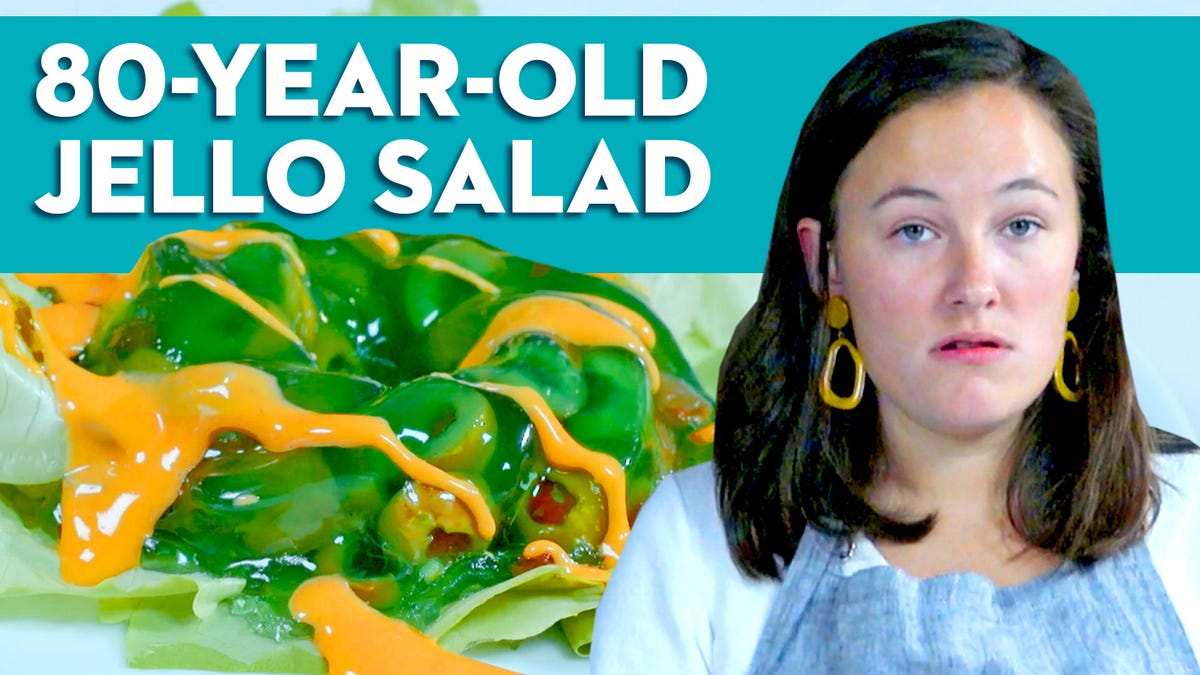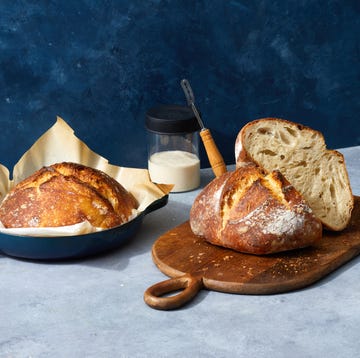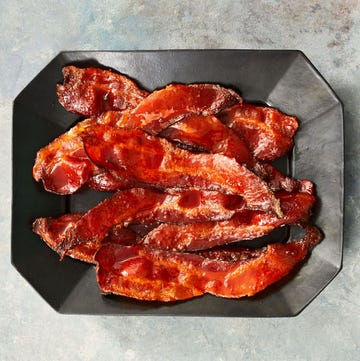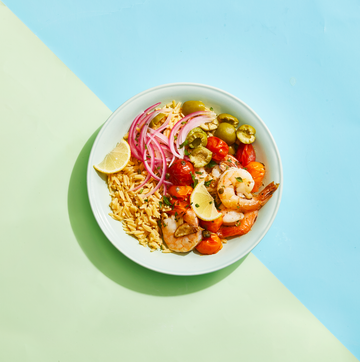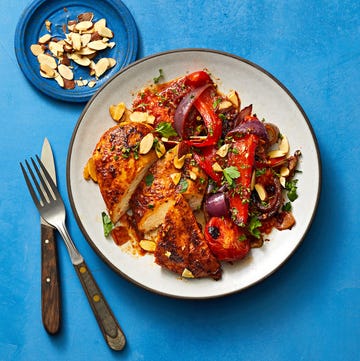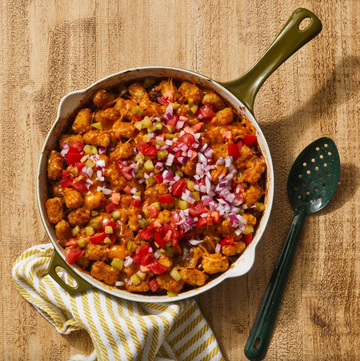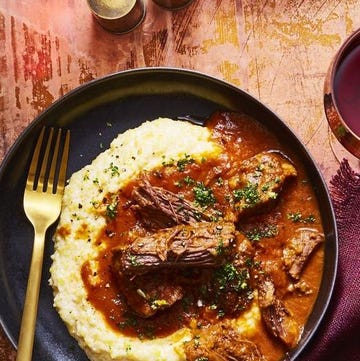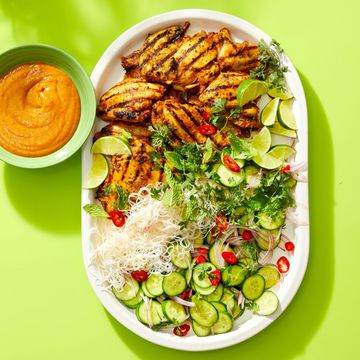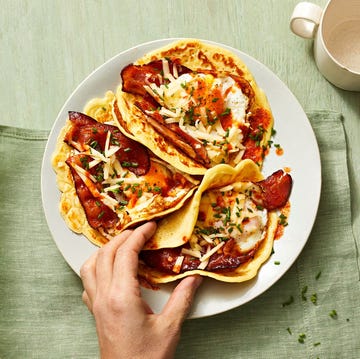You might have noticed bottles of mezcal next to the tequila at your local bar or liquor store and wondered, “What’s the difference between mezcal and tequila?” They’re both agave spirits from Mexico so basically the same, right? Nope! That’s like saying there’s no difference between bourbon and whiskey. Just as there are many kinds of whiskey and bourbon is one of them, “tequila is actually considered a mezcal, which is a great fun fact for your next party,” says Valerie Alvarado, Pernod Ricard Agave Ambassador. In other words, while all tequila is mezcal, not all mezcal is tequila. Mezcal refers to the category of spirits made from the agave plant and tequila is just one type of mezcal.
According to Redford Parker, co-founder of El Buho Mezcal Artesanal, there are four main ways to distinguish mezcal from tequila:
- Contents: Mezcal is distilled from 100% agave juice whereas tequila needs only to be from 51% or more agave juice.
- Agave Species: Mezcals can be made from any species of agave whereas tequilas can only be made from one type — Blue Weber agave.
- Region: Most mezcals (about 90%) come from the Mexican state of Oaxaca. Tequilas are typically produced in the state of Jalisco.
- Cooking Method: Mezcal artesanal (which makes up 95% of the category) requires that agaves used for production are cooked on an open-pit fire. On the other hand, the traditional method for producing tequila steams the agave.
There are further divides in how the two spirits taste and are best enjoyed. Read on for must-know info on the difference between mezcal and tequila.
What is mezcal?
Mezcal is a Mexican spirit distilled from agave, a large succulent plant with spiky leaves. It’s made by cooking the heart of the agave plant (the “piña,” so named because it resembles a huge pineapple). Artisanal methods slowly braise the agave over a fire, caramelizing the piña and giving the resulting spirit a smoky flavor. Some modern commercial producers, however, take shortcuts, yielding mezcals with less developed flavor.
Éva Pelczer, Director of Brand Education for Del Maguey Mezcal, describes the spirit as the heritage mother of tequila. “Traditional mezcal has been made for over 400 years — all done by hand without modern efficiencies, which makes for incredibly expressive, unique spirits,” she explains. Because mezcal is typically made in smaller quantities, it will take longer to produce than tequila, which usually undergoes a more industrialized, large-batch production. “That's why a lot of people around the world have heard of and tasted tequila,” says Pelczer, “while many are just starting to learn about mezcal.” We've noticed an increase in mezcal popularity and availability; you can even find it in canned cocktails!
Most mezcal is made in Oaxaca, but it can legally be made in the following other states of Mexico: Durango, Guanajuato, Guerrero, Michoacán, Puebla, San Luís Potosí, Tamaulipas, and Zacatecas.
What is tequila?
Tequila, a type of mezcal, is also distilled from the agave plant. “There are three major factors that differentiate tequila from mezcal: location, agave type and production methods,” says Chris Simmons, National Brand Ambassador for Tequila Ocho and Mezcal Vago. Let's explore each factor:
- Location: To get a better handle on tequila vs. mezcal, Simmons draws the comparison to Champagne vs. sparkling wine. Champagne must be made with specific grapes grown in the Champagne region of France (everything else is just sparkling wine). “Tequila must be made from a specific type of agave that can only come from one of five different states within Mexico,” explains Simmons. According to Mexican law, tequila must be produced in the state of Jalisco, Guanajuato, Michoacan, Nayarit or Tamaulipas.
- Type of Agave: To be considered a true tequila, the mash must be composed of at least 51% of the Blue Weber agave (“agave tequilana” in Spanish); the remaining percentage can be composed of other sugars, such as cane sugar and high fructose corn syrup. You can find tequila made from a mash that’s up to 100% Blue Weber agave (it will be touted on the bottle’s label), which is considered higher quality and will fetch a higher price.
- Production Method: “Generally speaking, tequila production is much more modernized than mezcal,” says Simmons. “Bigger and more modern machinery is used and the volume of tequila produced annually dwarfs that of mezcal."
What are the different types of tequila?
There are a few different types of tequila, each based on how long it’s been aged. In general, the longer tequila is aged the darker it will be as it picks up color from the barrel. “Tequila incorporates aging in wood that gives those expressions a barrel-influenced softness and roundness, a cousin of our whiskey methodologies in the U.S.," explains Pelczer. Mezcal can also be aged but it is not common.
The main tequila types include:
- Blanco (also called white or silver): Clear in color, blanco tequila is typically unaged but can be aged up to 2 months. It’s a staple in classic cocktails, like a Margarita or Paloma. Some connoisseurs consider the blanco style the purest expression of an agave spirit. It tends to have a “green” flavor that’s grassy with notes of citrus and pepper.
- Joven: (also called young or gold): Clear to light gold, joven tequila is mostly blanco tequila blended with a small amount of aged tequila. This category is not super common, but if you find it, be sure to check the label says 100% blue agave — some bottles called “gold” are mixed with caramel coloring or glycerin (to give a rounder mouthfeel).
- Reposado: From the Spanish word “rested,” reposado tequila is pale gold in color and aged 2 months to 1 year. It’s a happy medium between blanco and anejo tequilas: bright with citrus and just starting to show hints of vanilla and spice from the barrel.
- Añejo: Literally meaning “aged” in Spanish, the añejo style of tequila is dark amber in color and aged 1 to 3 years in oak. During that time in the barrel, the tequila will pick up notes of vanilla, spice and caramel, giving the spirit a richer, rounder profile that lends itself to sipping neat.
- Extra añejo: This extra-aged tequila is even darker in color than añejo and must spend at least 3 years in oak. The result is silky, rich and more intensely flavored with notes of caramel, vanilla and baking spices, much like an aged whiskey.
What are the different types of mezcal?
While you can find aged mezcals, they are uncommon. Some diehard mezcal fans say the barrel influence detracts from the true expression of the spirit. If you spot them, they will be categorized like tequila: joven, reposado and añejo. Since aging is not typical, a more useful way to discern among mezcal bottles is to look at the agave type used for production (see What are some types of agave used to make mezcal?).
How are mezcal and tequila different in flavor?
Depending on the producer, the flavor will vary from bottle to bottle. “In general, mezcal has a denser mouthfeel with a predominant profile of roasted agaves,” says Parker. He likens the taste to a candied yam or sweet potato mixed with a touch of brewer’s yeast, which has a complex, almost savory flavor. “Other dominant flavor profiles from mezcal include tropical fruits, creamy caramels, sweet and bitter chocolates, vanilla and herbs,” Parker adds. Tequilas, in comparison, tend to be lighter-bodied and more citrus-forward.
Just as a grape varietal and the region where a wine was made can give clues to how a wine tastes, the type of agave and where it was grown will influence the taste of tequila and mezcal. “Terroir differences create unique aroma and flavor profiles,” says Simmons. “Imagine tequila is like Pinot Noir: It's produced in Willamette Valley, Oregon, Sonoma County, California and the Burgundy region in France,” he says. “While these wines all taste unique because of their geographic location, they are all still Pinot Noirs.”
“Mezcal is very different as there are well over three dozen varieties of agave used in its production.” Simmons likens mezcal to the rest of the wine world. “You have Syrah from the Rhone Valley of France, Sauvignon Blanc from New Zealand and Malbec from Argentina,” he says. “Just like in this wine scenario, there is much more variety in aroma and flavor with so many different types of agaves used for mezcal.”
What are some types of agave used to make mezcal?
- Espadín: The most commonly used agave by far, espadín makes up 80 to 90 percent of mezcal production. It tends to be easier to break down into alcohol, making it an accessible choice for producers. “This agave tends to have a slightly more neutral profile than others,” says Simmons, “effectively allowing it to showcase the terroir from where it came as well as the influence of the hand of the maker.” Espadín also happens to be a close relative of the agave used to make tequila so the the mezcal it produces may have a profile similar to tequila.
- Tobalá: Simmons describes mezcals made from tobalá as more earthy, nutty and floral. This variety of agave is rarer than espadín, takes longer to mature (10 to 15 years) and is less efficient at converting into alcohol. Unsurprisingly, the resulting mezcal tends to be pricier.
- Arroqueño: This is another rare variety of agave that can take up to 20 years to mature. The mezcal it produces tends to be intense and complex, layered with floral, earthy and woody notes.
- Tepeztate: An agave type that is low-yielding for alcohol, tepeztate can take up to 35 years to mature. According to Simmons, mezcals made from this variety are often floral, vegetal and “green” tasting.
- Cuishe: This type of agave falls within the subset of Karwinskii varieties. Simmons says mezcals distilled from cuishe are distinguished by their pronounced vegetal notes, bright citrus and tropical fruits.
Are all mezcals smoky?
“The idea that all mezcals are smoky is one of the largest misconceptions of this beautiful spirit,” Simmons says. “While smoke is a component, it doesn't have to be the dominating aroma or flavor.” Pelczer agrees that mezcal can have an incredible range of flavors as it travels across your palate. “You might pick up on notes of roasted agave, tropical fruit, botanicals, herbal qualities, minerality,” she says. “Every mezcal-producing family has slightly different methods based on their individual heritage and those differences result in flavor profiles unique to each producer.”
If you aren’t a fan of smoky spirits, Alvarado says there’s still a mezcal for you. "Are you more inclined towards ripe fruits, tropical flavors, chocolatey richness, earthiness or spiciness?" She recommends trying at least two different kinds side by side to better understand which one appeals to you.
Do the best mezcals come from Oaxaca?
“While Oaxaca is home to most of the mezcal made, I wouldn't anoint one region or another the title of the ‘best,’” says Simmons. He explains that because of its varied geography and unique terroirs, Oaxaca has a wide range of profiles for its mezcal.
What is the best way to drink tequila and mezcal?
“For me, tequila is all about sipping it thoughtfully at room temperature,” says Alvarado. “While some enjoy it chilled or with salt and lime, I want to truly grasp the essence of this remarkable Mexican spirit.”
“If people are drinking good quality tequila, I say drink it the way you enjoy it most,” Simmons advises. “For me, personally, that means always drinking it neat.” He believes this is the best way to experience the nuanced aromas and flavors of the spirit, and that chilling or serving tequila with ice or with drops of water will make it less interesting than when sipped neat.
When it comes to mezcal, Simmons exclusively drinks it neat or in cocktails. “In my opinion, it's best to leave the ice in the freezer when drinking mezcal on its own,” he says. “Mezcal is so much more than the smoky cousin of tequila that people make it out to be,” he adds. If newcomers to the spirit find it challenging, Simmons recommends trying it in cocktails. “Even a simple mezcal margarita is a delicious way to approach learning about this beautiful spirit.”
Parker says the best way to enjoy artisanal mezcal is with a meal, sipped neat in a wide-mouth cup made of glass. “Mezcal works with all types of food but pairs incredibly with Mexican and Japanese, in my humble opinion.” He also likes to close out a meal with a mezcal that has a sweet caramel and vanilla profile, like an extra añejo.
Can you substitute mezcal for tequila?
“Absolutely!” declares Pelczer. She even suggests swapping in other spirits besides tequila. “Take any gin or vodka cocktail (such as a Negroni or Moscow Mule) and make it with mezcal,” she says. “And if you're feeling shy about going full-on with mezcal, start by replacing only half of the tequila in your Margarita or Paloma.” She also suggests adding a small 1/4-oz float of mezcal to your tequila cocktail.
"One of my favorite mezcal cocktails is the 'Sour Owl,' which replaces rum in a traditional daiquiri with mezcal in equal parts with lime juice and simple syrup," says Parker.






